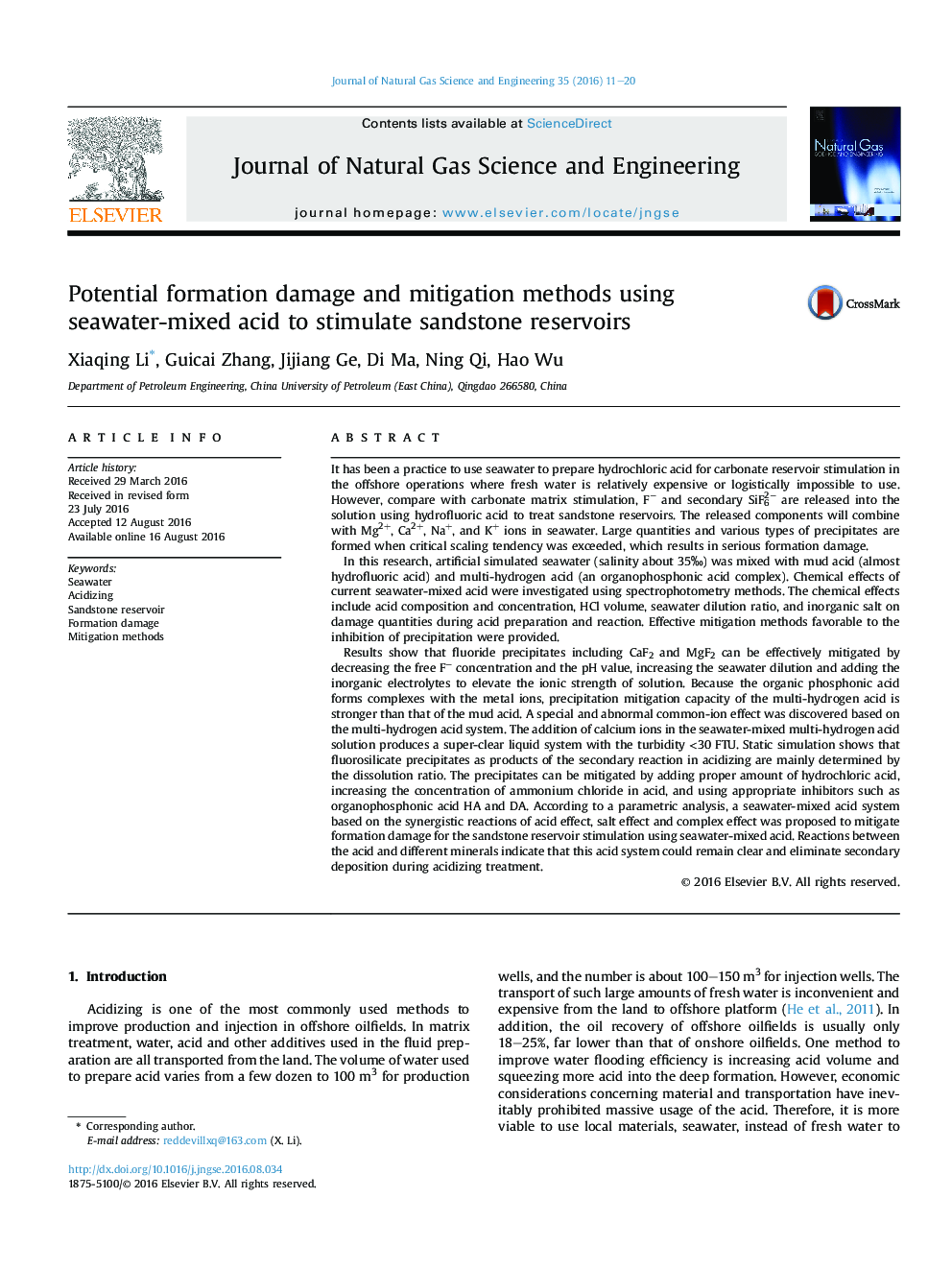| کد مقاله | کد نشریه | سال انتشار | مقاله انگلیسی | نسخه تمام متن |
|---|---|---|---|---|
| 1756997 | 1399419 | 2016 | 10 صفحه PDF | دانلود رایگان |
• Factors of formation damage using seawater to prepare acid were investigated.
• An abnormal common-ion effect was discovered.
• Effective mitigation methods for precipitation were found out.
• A proposed seawater-mixed acid could remain clear and mitigate secondary damage.
It has been a practice to use seawater to prepare hydrochloric acid for carbonate reservoir stimulation in the offshore operations where fresh water is relatively expensive or logistically impossible to use. However, compare with carbonate matrix stimulation, F− and secondary SiF62− are released into the solution using hydrofluoric acid to treat sandstone reservoirs. The released components will combine with Mg2+, Ca2+, Na+, and K+ ions in seawater. Large quantities and various types of precipitates are formed when critical scaling tendency was exceeded, which results in serious formation damage.In this research, artificial simulated seawater (salinity about 35‰) was mixed with mud acid (almost hydrofluoric acid) and multi-hydrogen acid (an organophosphonic acid complex). Chemical effects of current seawater-mixed acid were investigated using spectrophotometry methods. The chemical effects include acid composition and concentration, HCl volume, seawater dilution ratio, and inorganic salt on damage quantities during acid preparation and reaction. Effective mitigation methods favorable to the inhibition of precipitation were provided.Results show that fluoride precipitates including CaF2 and MgF2 can be effectively mitigated by decreasing the free F− concentration and the pH value, increasing the seawater dilution and adding the inorganic electrolytes to elevate the ionic strength of solution. Because the organic phosphonic acid forms complexes with the metal ions, precipitation mitigation capacity of the multi-hydrogen acid is stronger than that of the mud acid. A special and abnormal common-ion effect was discovered based on the multi-hydrogen acid system. The addition of calcium ions in the seawater-mixed multi-hydrogen acid solution produces a super-clear liquid system with the turbidity <30 FTU. Static simulation shows that fluorosilicate precipitates as products of the secondary reaction in acidizing are mainly determined by the dissolution ratio. The precipitates can be mitigated by adding proper amount of hydrochloric acid, increasing the concentration of ammonium chloride in acid, and using appropriate inhibitors such as organophosphonic acid HA and DA. According to a parametric analysis, a seawater-mixed acid system based on the synergistic reactions of acid effect, salt effect and complex effect was proposed to mitigate formation damage for the sandstone reservoir stimulation using seawater-mixed acid. Reactions between the acid and different minerals indicate that this acid system could remain clear and eliminate secondary deposition during acidizing treatment.
Journal: Journal of Natural Gas Science and Engineering - Volume 35, Part A, September 2016, Pages 11–20
